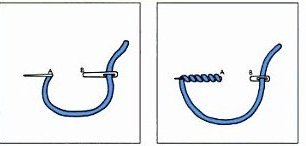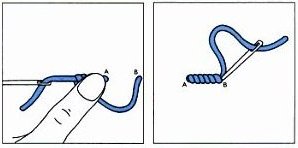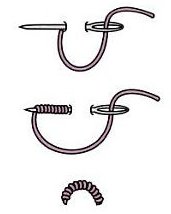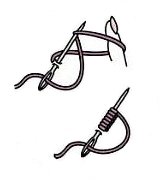Bullion knots is a kind of stitch used in hand embroidery. This embroidery stitch have been used in many forms of embroidery through the ages and have been known by various names. These include grub stitch, caterpillar stitch, coil stitch, knot stitch, post stitch, roll stitch, worm stitch and Porto Rico rose.
This stitch is formed by working an incomplete backstitch, leaving the needle in the fabric. It is vital that the point of the needle exist from the hole where it started.
What Kind of Needle I can Use
The use of a long, very narrow needle, such as beading or milliner’s needle, may make the bullion knots easier to work becouse the entire shaft of the needle is the same diameter and the eye doesn’t bulge. This makes it easier to pull the needle through the wraps in the thread.
Instruction


- Bring the needle to the front back of the fabric and put the needle back in a short distance away.
- Bring the needle halfway back out again and coil the thread round the needle six or seven times.
- Pack the coils down evenly onto the fabric and, holding them with the left thumb, pull the needle and thread through the fabric and the coil, making it lie flat.
- Insert the needle back into the fabric to secure the knot and finish with a few tiny stitches at the back.
How To do Bullion Rose
To make bullion rosettes, begin working with three short bullion knots to form a triangle. Then work one bullion knot to wrap around one corner of the triangle, putting a few extra twists on the needle so that the knot curls around instead of lying straight. Next add another bullion knot, overlapping half the previous one.
How to do Looped Bullion

Same as the bullion knot, but make the wrapped part of the stitch at least twice as long as the original stitch.
How to do Cast-on Stitch

First, make a small stitch and do not pull through. Following the diagram, wrap the yarn around your finger as shown, then pick it up with the needle. Slide the stitch onto the needle and then repeat to make an even row of stitches on the needle. Pull the needle through the stitches. Sink it close to the first stitch. The size of the finished stitch will depend on the number of cast-on stitches.
